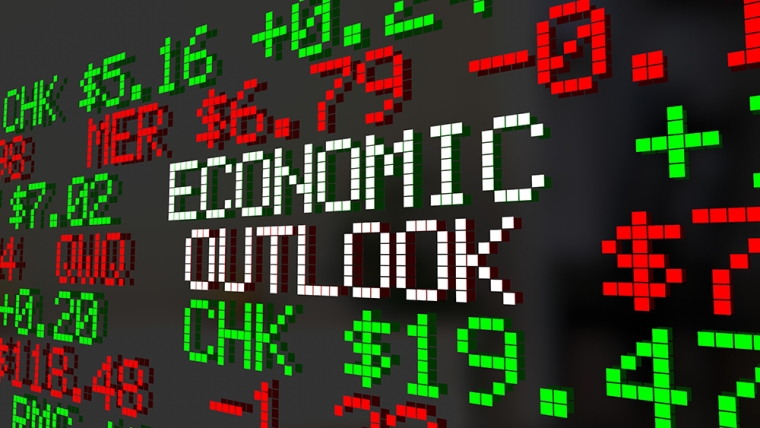
By Stuart Talman, XE currency strategist

No news is good news.
With banking sector turbulence now in the rear-view mirror and a global economic calendar absent tier 1 macroeconomic data, the week’s newsflow has been extremely quiet…..a sense of calm has spread throughout the market.
Adopting the view that a widespread crisis has been averted and the Fed’s late cycle aggression has been tampered by the past few weeks banking storyline, the market has shifted to a mild upside bias, risk assets benefitting.
US and European equity markets are firmly in the green for Wednesday, bond yields sustain an orderly rebound from last week’s lows, WTI crude is circa 15% higher from last week’s lows.
Amongst the G10 cohort, the past few weeks has delivered noted outperformance for the EUR, JPY and GBP whilst the AUD and NZD reside in the bottom third of the leader board during this span.
The New Zealand dollar has failed to capitalise on Wednesday’s risk positive mood, remaining firmly planted within a prevailing 6-week range.
Climbing throughout Tuesday’s sessions and into the Asian morning, yesterday, the Kiwi looked primed to have another crack at punching up through stout resistance at 0.6270. On a half dozen or so occasions from late February onwards, NZDUSD daily highs have oscillated either side of this critical technical level. Trendline support pushed the Kiwi higher over the past two weeks, suggesting that a topside breakout is forthcoming.
Alas, it weas not to be…..Wednesday’s high marked a pip or so above 0.6270 before the Kiwi tipped over, offered throughout the Asian afternoon, European trade and into the New York morning.
The Kiwi has traded an overnight low at 0.6215.
Directionless trade remains the New Zealand dollar’s status quo.
The Fed next meets on 04 May, market pricing roughly split between another 25bps hike versus a pause.

As banking sector concerns recede, rates markets have been unwinding some of the dovish repricing of the past few weeks, now calling for around 50bps of cuts from the Fed through to year-end.
We’ll be closely monitoring the yield on the US 2-year bond, which plummeted from north of 5.00% on 09 March through 3.60% at last Friday’s low. This week has seen the yield push back up through 4%. This shorter dated treasury is more sensitive (relative to the benchmark 10-year) to changes in Fed policy.
Should the yield on the 2-year continue to rebound, ascending back through 4.50%, this likely causes discomfort for equity market bulls and creates a tailwind for the US dollar as market participants again have to adjust their expectations for near-term Fed policy decisions.
A 2-year yield north of 4.50% likely forces the New Zealand dollar back towards the lower bound of the six-week range, testing the 08 March low near 0.6080.
Conversely if the 2-year yield stalls around 4%, the greenlight flashes for buyers of US equities, in particular tech stocks that have significantly outperformed the broader market through the first quarter. The Nasdaq is having its strongest quarter since 2020.
Against this backdrop, 0.6270 technical resistance crumbles, the Kiwi likely charting a course back to 65 US cents.
Yesterday’s sole data point of note, monthly CPI for the Australian economy came in weaker-than-expected, falling from 7.4% to 6.8% (vs 7.1% expected). The downside miss strengthens the argument for the RBA to pause. Rising odds of an on-hold decision at next Tuesday’s meeting suggest that at 3.60%, the cash rate may have reached its peak.
The result lifted NZDUSD to a daily high through 0.9350, however gains have been pared throughout offshore trade, the antipodean cross retreating back near 0.93. Another failure to consolidate above the 0.9350/70 resistance zone signals further topside exhaustion.
A break below 0.9285, the 50% Fibonacci retracement of the December to February sell-off is required to validate the end of the past four week’s bounce.
Looking to the day ahead, the headline data release is 4Q GDP for the US economy, annualised growth expected to remain at 2.7%. Initial Jobless claims weekly data will also be closely monitored – a result below 200K seen as confirming ongoing labour market resiliency.
New Zealand dollar price action is converging within an ascending triangle price pattern – suggesting that a topside breakout above 0.6270 is imminent. However, should Thursday deliver a second day of NZD weakness, the ascending triangle’s trendline support will cave, rendering the bullish signal obsolete.
Daily exchange rates
Select chart tabs
Stuart Talman is Director of Sales at XE. You can contact him here.

We welcome your comments below. If you are not already registered, please register to comment.
Remember we welcome robust, respectful and insightful debate. We don't welcome abusive or defamatory comments and will de-register those repeatedly making such comments. Our current comment policy is here.